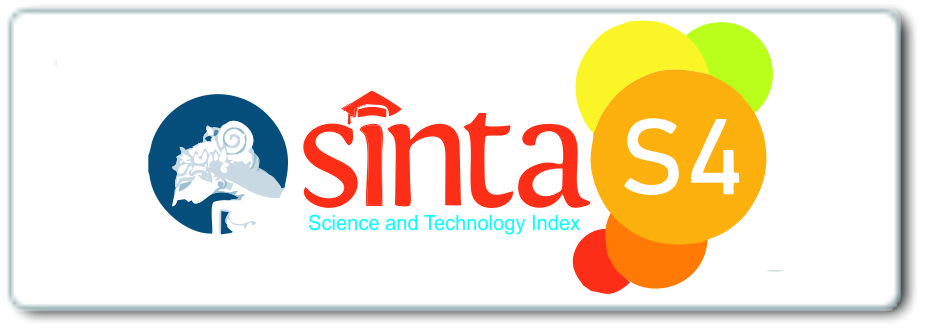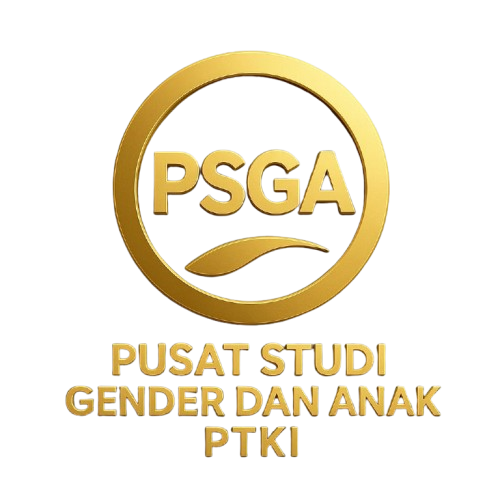Jurnal Template
Setara Journal starting Vol 4 No 02 (2022) will change the template to IMRAD Plus.
(Authors can download the journal template at the bottom of the page)
The Title:
The research title should be succinct and insightful using a maximum of 15 words and without any acronyms. The topic should be actual and up-to-date. Tittle Must Be Typed Using 13 Book Antiqua Font, Bold.
Abstract:
An abstract written in English and Bahasa Indonesia. It is maximum 200 words was required for any submitted manuscript. Abstract was written using Book Antiqua Font 10. It was written narratively containing at least background of study, aims and scope of paper, method, summary of result or finding, and significance of the research. It should be presented separately from the article, so it is independent. Each manuscripts should have 3 to 7 Keyword written under the abstract. The keywords should help audience search the relevant literature to their interest
Keywords: First keyword, second keyword, third keyword
INTRODUCTION:
The introduction is a little different from the short and concise abstract. The reader needs to know the background to your research and, most importantly, why your research is important in this context. This section comprises the background, the summary of previous relevant studies, the aims of writing the article, and the description of the problem solving and clear objectives of the research.
The purpose of the Introduction is to stimulate the reader's interest and to provide pertinent background information necessary to understand the rest of the paper. You must summarize the problem to be addressed, give background on the subject, discuss previous research on the topic, and explain exactly what the paper will address and why. Please explore in more words the background of your paper and your current research position among other research on related themes. It is necessary to build argument and to provide original data discussed and compared to research and works of other scholars. In other words, the way to discuss an issue here is by combining the data and the discussion. Then desrcibe your purpose of this research.
Tips:
- Begin the Introduction by providing a brief background in the form of social facts from the problems studied.
- Introduce the reader to the pertinent literature. Do not give a full history of the topic. Only quote previous work having a direct bearing on the present problem. (State of the art, relevant research to justify the novelty of the manuscript.)
- State the objective of the Your research objective is the most important part of the introduction.
- Establish the significance of your work: Why was there a need to conduct the study?
- State the gap analysis or novelty statement.
LITERATURE REVIEW:
In the literature review, you provide an overview or plan that contains an explanation of all things that are used as research material based on the results of the research. You can also explain the relationship between a variable and another variable, which usually has the cause and effect of both or more of the two variables.
METHODS:
In the Method section, you explain clearly how you conducted your research order to: (1) enable readers to evaluate the work performed and (2) permit others to replicate your research. You must describe exactly what you did in your research. The main consideration is to ensure that enough detail is provided to verify your findings and to enable the replication of the research. You should maintain a balance between brevity (you cannot describe every technical issue) and completeness (you need to give adequate detail so that readers know what happened).
RESULTS:
The purpose of the Results is to state your findings. Its main function is to answer the questions posed in the Introduction, explain how the results support the answers and, how the answers fit in with existing knowledge on the topic. You may state the major findings with several evidence. Figures and tables are the most effective way to present results. Captions should be able to stand alone, such that the figures and tables are understandable without the need to read the entire manuscript. Besides that, the data represented should be easy to interpret.
Tips:
- The graphic should be simple, but informative;
- The use of color is encouraged;
- The graphic should uphold the standards of a scholarly, professional publication;
- The graphic must be entirely original, unpublished artwork created by one of the co-authors;
- Avoid choosing a graphic that already appears within the text of the manuscript.
DISCUSSION:
The Discussion is considered the heart of the paper and usually requires several writing attempts.The discussion will always connect to the introduction by way of the research questions or hypotheses you posed and the literature you reviewed, but it does not simply repeat or rearrange the introduction; the discussion should always explain how your study has moved the reader's understanding of the research problem forward from where you left them at the end of the introduction. To make your message clear, the discussion should be kept as short as possible while clearly and fully stating, supporting, explaining, and defending your answers and discussing other important and directly relevant issues. Care must be taken to provide commentary and not a reiteration of the results. Side issues should not be included, as these tend to obscure the message.
The discussion is highlighted in the title and subtitles of this section. In addition, this section should significantly explore the research findings without redundant and long direct quotation.
Tips:
- Resume your main findings;
- Explain how your results relate to expectations and to the literature, clearly stating why they are acceptable and how they are consistent or fit in with previously published knowledge on the topic;
- Relate the Findings to Those of Similar Studies;
- Consider Alternative Explanations of the Findings;
- Implications of the study;
- Acknowledge the Study's Limitations,
It is easy to inflate the interpretation of the results. Be careful that your interpretation of the results does not go beyond what is supported by the data. The data are the data: nothing more, nothing less. Please avoid and makeover interpretation of the results, unwarranted speculation, inflating the importance of the findings, tangential issues or over-emphasize the impact of your research.
CONCLUSIONS:
The conclusion is intended to help the reader understand why your research should matter to them after they have finished reading the paper. A conclusion is not merely a summary of the main topics covered or a re-statement of your research problem, but a synthesis of key points. It is important that the conclusion does not leave the questions unanswered.
Tips:
- State your conclusions clearly and concisely. Be brief and stick to the point;
- Explain why your study is important to the reader. You should instill in the reader a sense of relevance;
- Prove to the reader, and the scientific community, that your findings are worthy of note. This means setting your paper in the context of previous work. The implications of your findings should be discussed within a realistic framework, and;
- For most essays, one well-developed paragraph is sufficient for a conclusion, although in some cases, a two or three paragraph conclusion may be required.
The another of important things about this section is (1) do not rewrite the abstract; (2) statements with "investigated" or "studied" are not conclusions; (3) do not introduce new arguments, evidence, new ideas, or information unrelated to the topic; (4) do not include evidence (quotations, statistics, etc.) that should be in the body of the paper.
ACKNOWLEDGEMENTS:
This is a short text to acknowledge the contributions of specific colleagues, institutions, or agencies that aided the efforts of the authors.
AUTHOR CONTRIBUTION STATEMENT:
The Author Contributions Statement can be up to several sentences long and should briefly describe the tasks of individual authors. Please list only 2 initials for each author, without full stops, but separated by commas (e.g. JC, JS). In the case of two authors with the same initials, please use their middle initial to differentiate between them (e.g. REW, RSW).
REFERENCES:
References at least concist of 15 journal articles. All citations in the text must be in the reference list and vice-versa. The references should only include articles that are published or accepted. Datasets that have been deposited to an online repository should be included in the reference list, include the version and unique identifier when available. Personal communications should be documented by a letter of permission. In-text citations should be called according to the surname of the first author, followed by the year. For works by 2 authors include both surnames, followed by the year. For works by more than 2 authors include only the surname of the first author, followed by et al., followed by the year. For assistance please use management reference (Mendeley or Zotero) and utilize the format of American Psychological Association 6th Edition. If possible, please provide the retrieved link for each reference.
Article in a print journal:
Umar, U., Hendra, H., & Yusoof, M. H. B. (2019). Building Children’s Character: Ethnographic Studuy of Maja Labo Dahu Culture at Bima Community. Anglophile Jornal, 4(2), 182-201.
Article in an online journal:
Umar, U., Hendra, H., & Yusoof, M. H. B. (2019). Building Children’s Character: Ethnographic Study of Maja Labo Dahu Culture at Bima Community. SETARA: Jurnal Studi Gender dan Anak, 4(2), 182-201. https://doi.org/10.25217/ji.v4i2.582
Article or chapter in a book:
Hambleton, R. K. (2005). Issues, designs and technical guidelines for adapting tests into multiple languages and cultures. In Adapting educational and psychological tests for cross-cultural assessment (pp. 3-38). Mahwah, NJ, US: Erlbaum.
Book:
Baron, R. A. (1977). Human Aggression. Boston, MA: Springer US.
Theses and Dissertations:
Maba, A. P. (2017). Peran Kesendirian dan Kecemasan Sosial terhadap Keinginan untuk Konseling Siswa (Skripsi). Institut Agama Islam Negeri Metro, Lampung.
Since Vol. 7 No. 01 (2025): SETARA: Jurnal Studi Gender dan Anak has changed to a new journal template, the author please adjust it, you can download it below:





